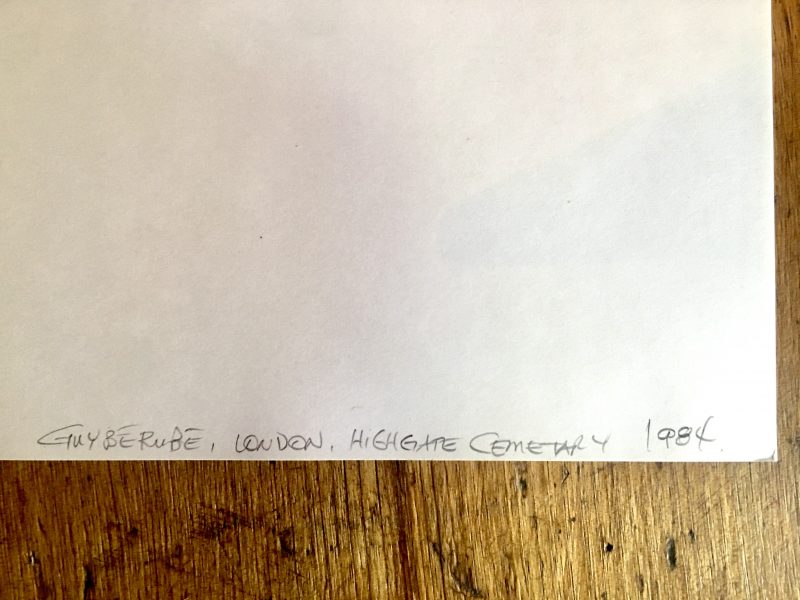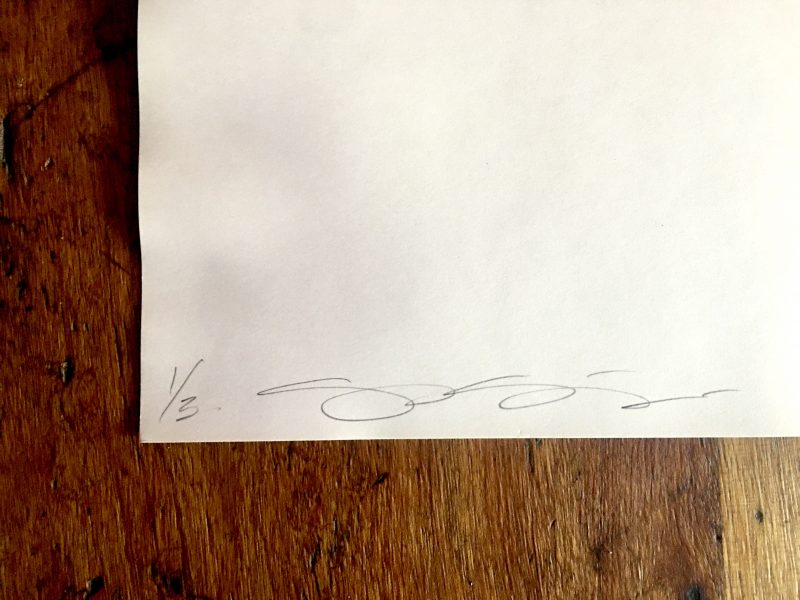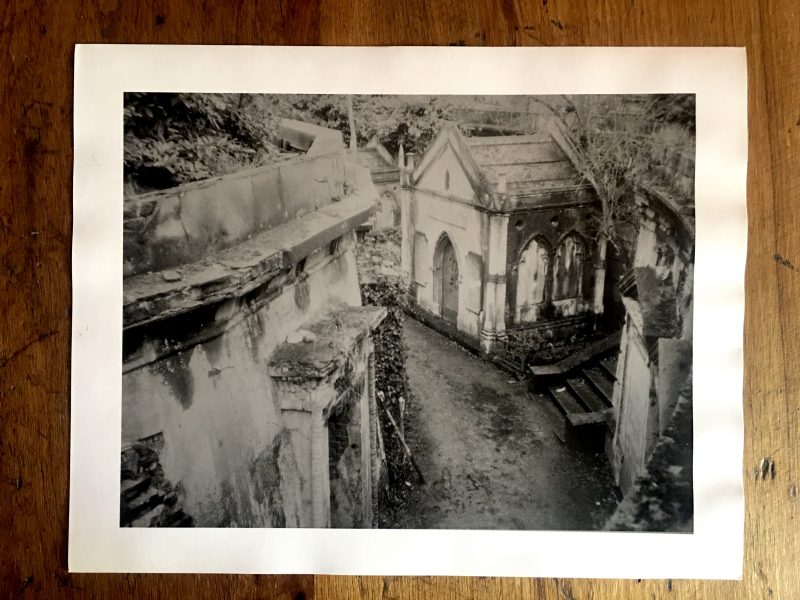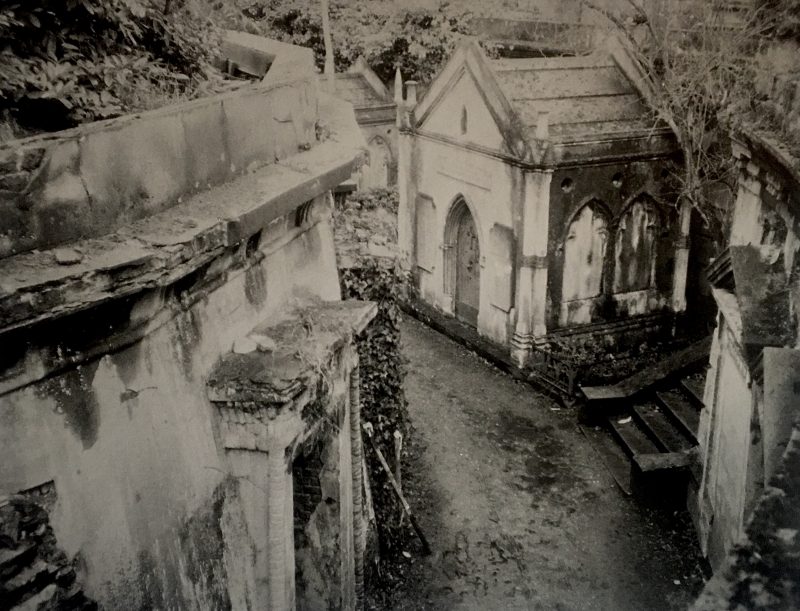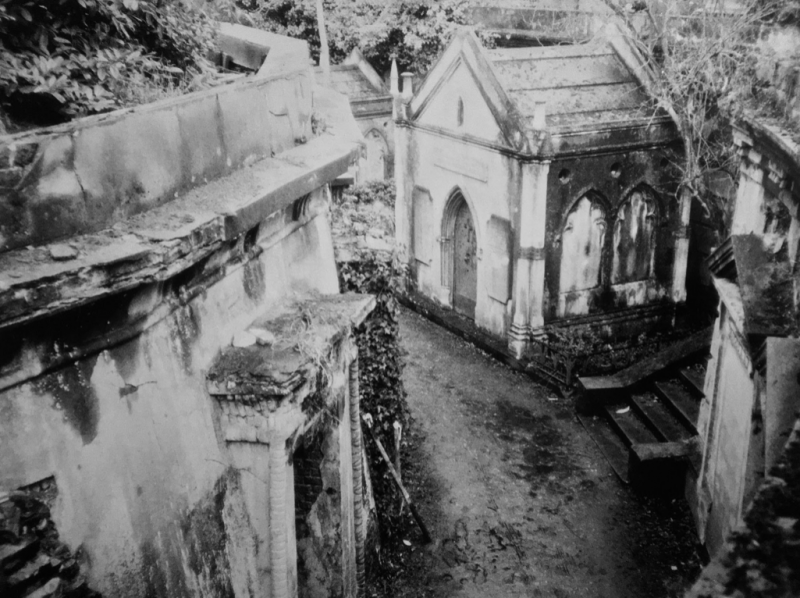‘Highgate Cemetery, London, England, 1984’, Set of 2 Photographs
‘Highgate Cemetery, London, England, 1984’, Photograph by Guy Berube, Transfer from an 8 x 10 inch Glass Negative, Printed in Darkroom. Measures: Paper 11 x 14 inches. Image on Paper: 9 x 12 inches. Edition of 3. (2 remaining). $200.
INFO:
Highgate Cemetery is a place of burial in north London, England, designed by architect Stephen Geary.
There are approximately 170,000 people buried in around 53,000 graves across the West and East sides. Highgate Cemetery is notable both for some of the people buried there as well as for its de facto status as a nature reserve. The Cemetery is designated Grade I on the Register of Historic Parks and Gardens.
Location
The cemetery is in Highgate N6, next to Waterlow Park, in the London Borough of Camden. It comprises two sides, on either side of Swains Lane. The main gate is on Swains Lane, just north of Oakshott Avenue. There is another, disused, gate on Chester Road. The nearest public transport (Transport for London) is the C11 bus, Brookfield Park stop, and Archway tube station.History and settin

The cemetery in its original form – the northwestern wooded area – opened in 1839, as part of a plan to provide seven large, modern cemeteries, now known as the “Magnificent Seven“, around the outside of central London. The inner-city cemeteries, mostly the graveyards attached to individual churches, had long been unable to cope with the number of burials and were seen as a hazard to health and an undignified way to treat the dead. The initial design was by architect and entrepreneur Stephen Geary.
On Monday 20 May 1839, Highgate (West) Cemetery was dedicated to St. James[4] by the Right Reverend Charles James Blomfield, Lord Bishop of London. 15 acres (6.1 ha) were consecrated for the use of the Church of England, and two acres were set aside for dissenters. Rights of burial were sold either for a limited period or in perpetuity. The first burial was Elizabeth Jackson of Little Windmill Street, Soho, on 26 May.
Highgate, like the others of the Magnificent Seven, soon became a fashionable place for burials and was much admired and visited. The Victorian attitude to death and its presentation[clarification needed] led to the creation of a wealth of Gothic tombs and buildings. It occupies a spectacular south-facing hillside site slightly downhill from the top of Highgate hill, next to Waterlow Park. In 1854 a further 19 acres (8 ha) to the south east of the original area, across Swains Lane, was bought to form the eastern extension; this opened in 1860. Both sides of the Cemetery are still used today for burials.
The cemetery’s grounds are full of trees, shrubbery, and wildflowers, most of which have been planted and grown without human influence.[citation needed][clarification needed] The grounds are a haven for birds and small animals, such as foxes. The cemetery is now owned and maintained by a charitable trust, the Friends of Highgate Cemetery Trust, which was set up in 1975 and acquired the freehold of both East and West sides by 1981. In 1984 it published Highgate Cemetery: Victorian Valhalla by John Gay.[5]
Graves
West Side

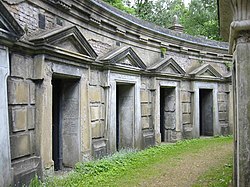
The Egyptian Avenue and the Circle of Lebanon (previously surmounted by a huge, 280 years old Cedar of Lebanon, which had to be cut down and replaced in August 2019) are both Grade I listed buildings. The west side of the Cemetery is characterised by elaborate feature tombs, vaults and winding paths dug into hillsides. At the highest point, the Terrace Catacombs and the Tomb of Julius Beer are both Grade II* listed.
